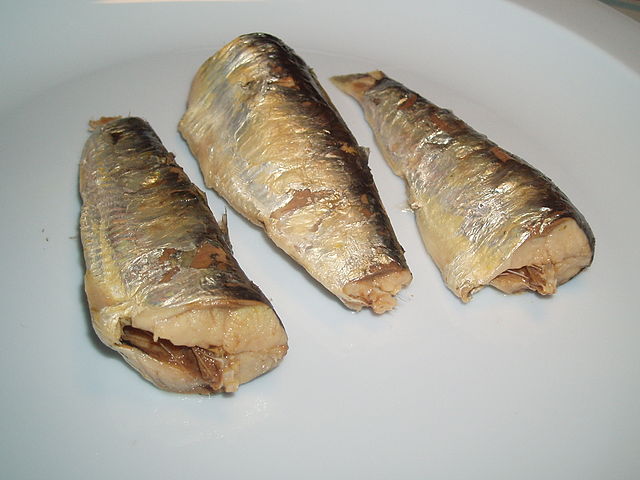
File:2006 sardines plate flash.jpg
- File
- File usage
- Metadata
- About Schools Wikipedia

Size of this preview: 640 × 480 pixels.
| |
This is a file from the Wikimedia Commons. Information from its description page there is shown below.
Commons is a freely licensed media file repository. You can help. |
Summary
| Description | Canned sardines in salt water |
| Date | 12 May 2006 |
| Source | Own work |
| Author | Rl |
Related images (4/7)
Licensing
|
Metadata
This file contains additional information, probably added from the digital camera or scanner used to create or digitize it. If the file has been modified from its original state, some details may not fully reflect the modified file.
| Image title | OLYMPUS DIGITAL CAMERA |
|---|---|
| Camera manufacturer | OLYMPUS IMAGING CORP. |
| Camera model | u-miniD,Stylus V |
| Exposure time | 1/40 sec (0.025) |
| F-number | f/11 |
| ISO speed rating | 100 |
| Date and time of data generation | 18:58, 12 May 2006 |
| Lens focal length | 8.02 mm |
| Orientation | Normal |
| Horizontal resolution | 314 dpi |
| Vertical resolution | 314 dpi |
| Software used | Version 1.0 |
| File change date and time | 18:58, 12 May 2006 |
| Y and C positioning | Co-sited |
| Exposure Program | Normal program |
| Exif version | 2.21 |
| Date and time of digitizing | 18:58, 12 May 2006 |
| Meaning of each component |
|
| Exposure bias | 0 |
| Maximum land aperture | 3.61 APEX (f/3.49) |
| Metering mode | Pattern |
| Light source | Unknown |
| Flash | Flash fired, compulsory flash firing |
| Supported Flashpix version | 0,100 |
| Colour space | sRGB |
| File source | Digital still camera |
| Custom image processing | Normal process |
| Exposure mode | Auto exposure |
| White balance | Auto white balance |
| Digital zoom ratio | 1 |
| Scene capture type | Standard |
| Scene control | Low gain up |
| Contrast | Normal |
| Saturation | Normal |
| Sharpness | Normal |
About Schools Wikipedia
Schools Wikipedia was launched to make learning available to everyone. SOS Children believes education is an important part of a child's life. That's why we ensure they receive nursery care as well as high-quality primary and secondary education. When they leave school, we support the children in our care as they progress to vocational training or higher education. Sponsoring a child is the coolest way to help.





